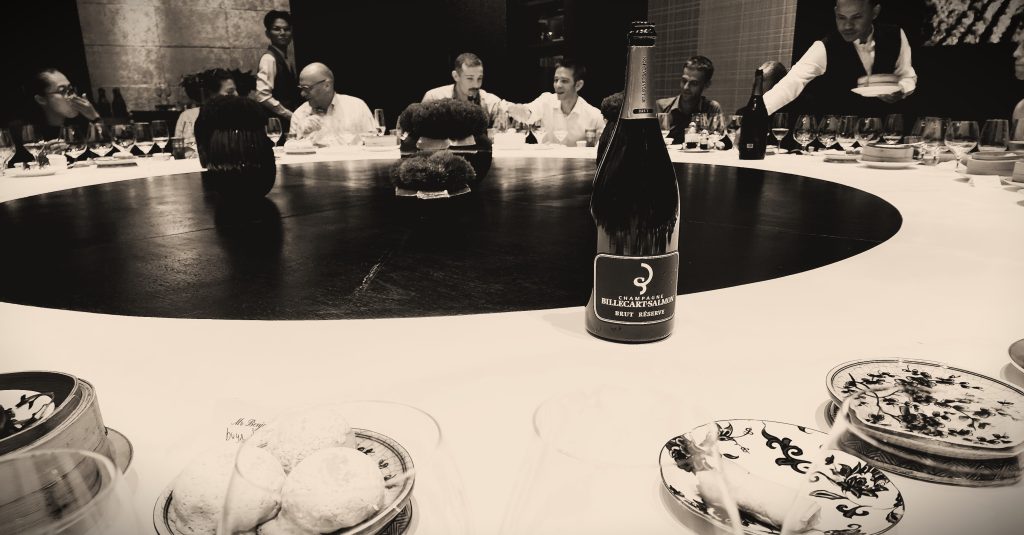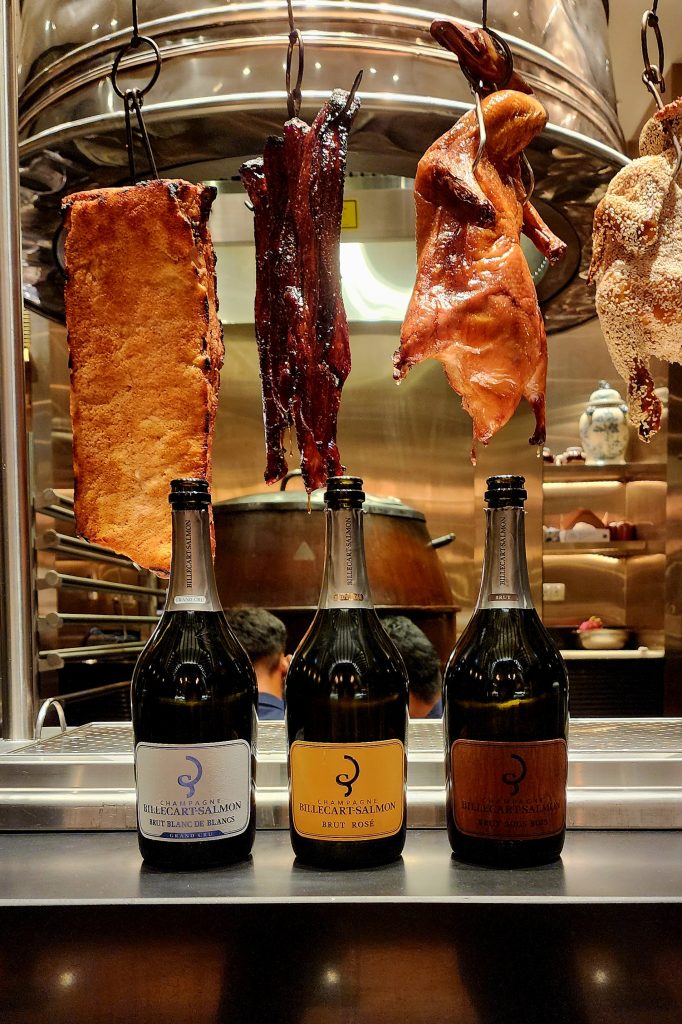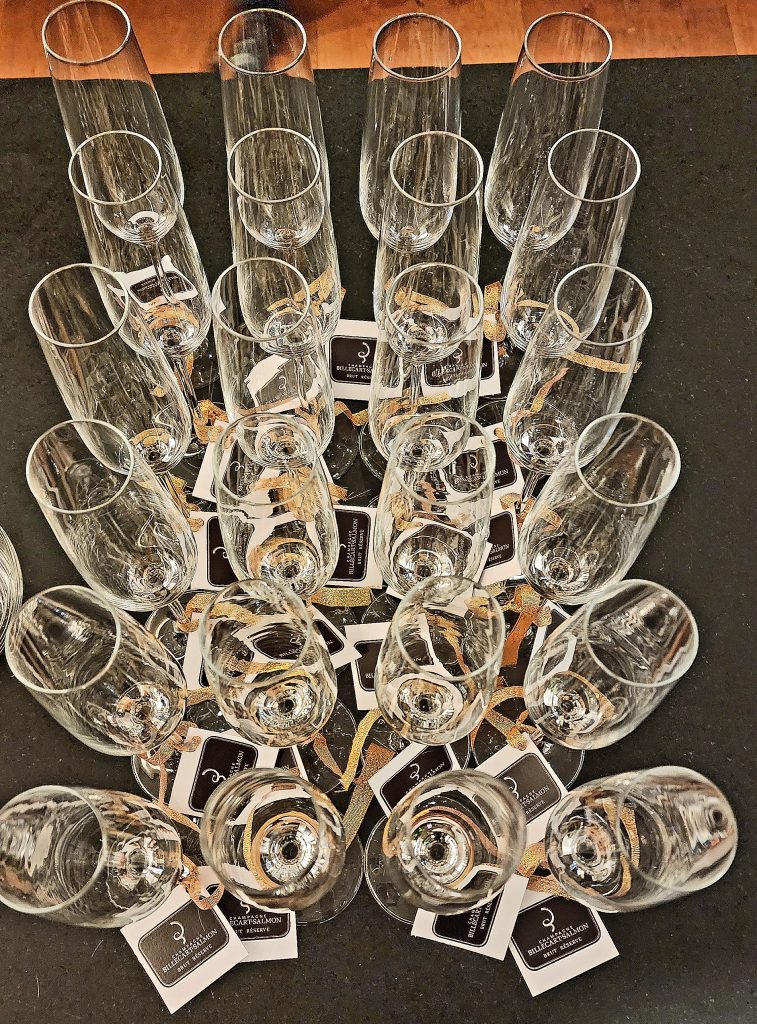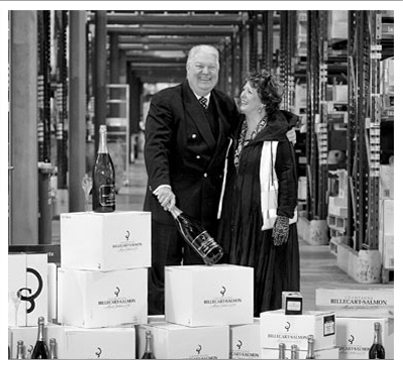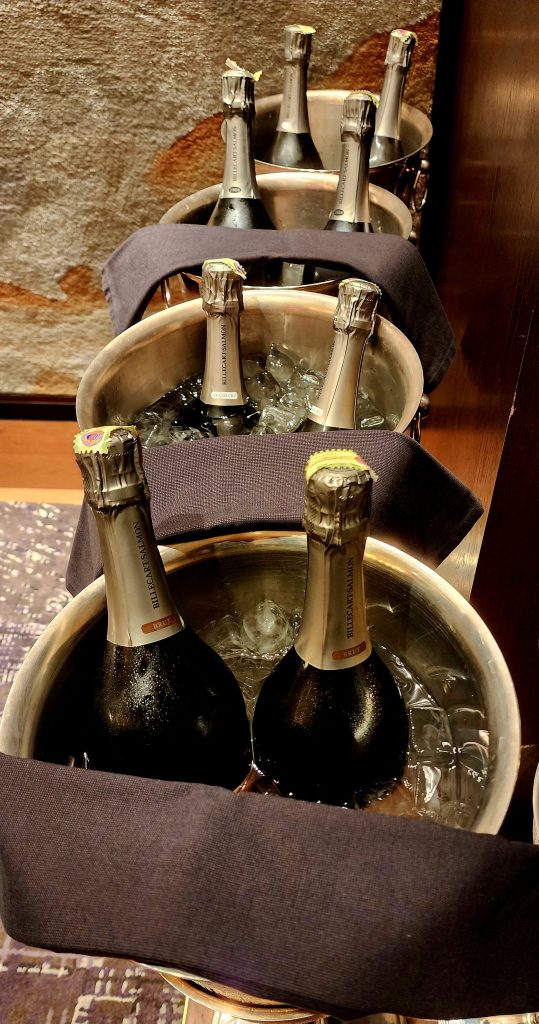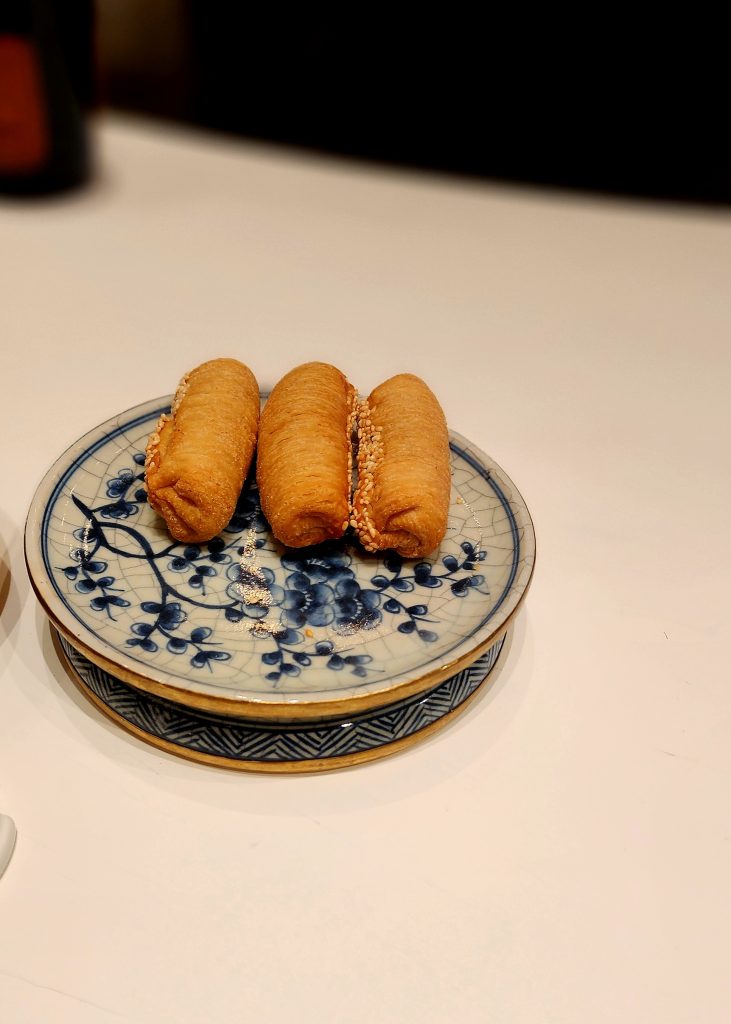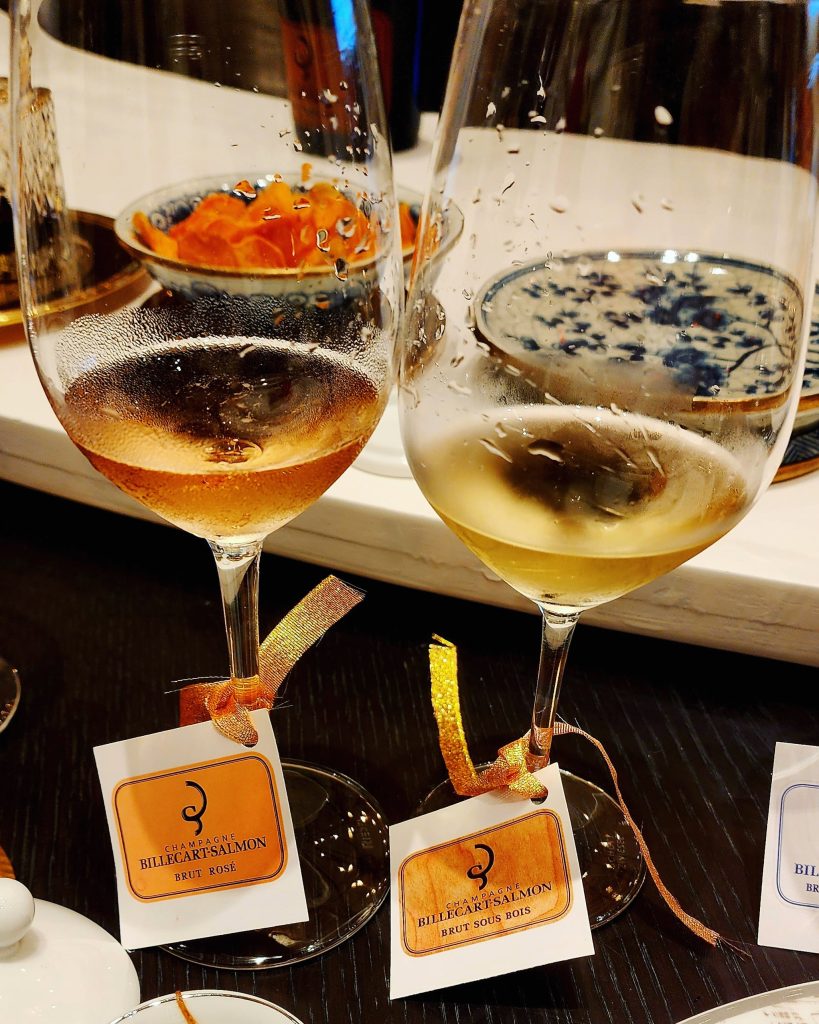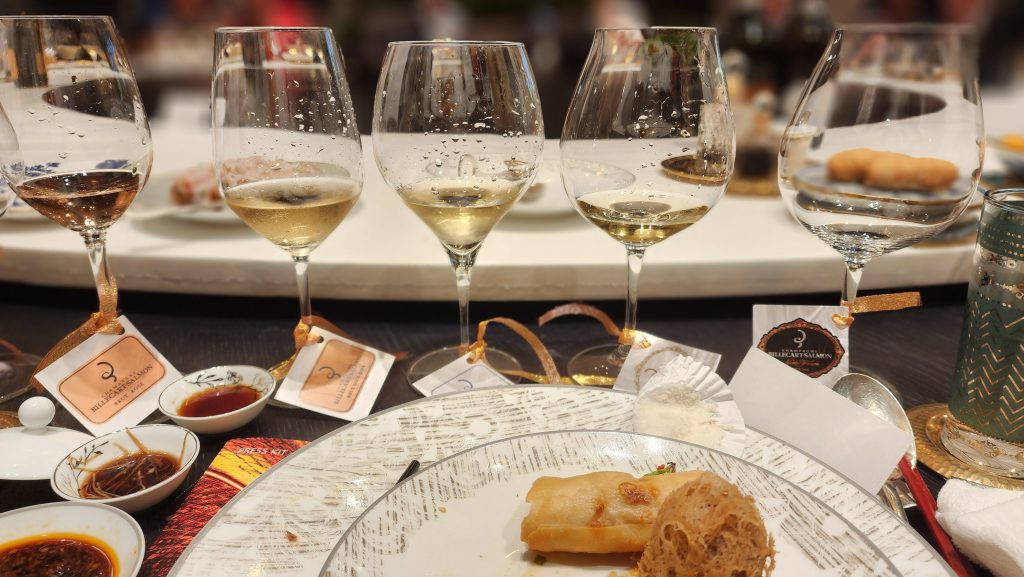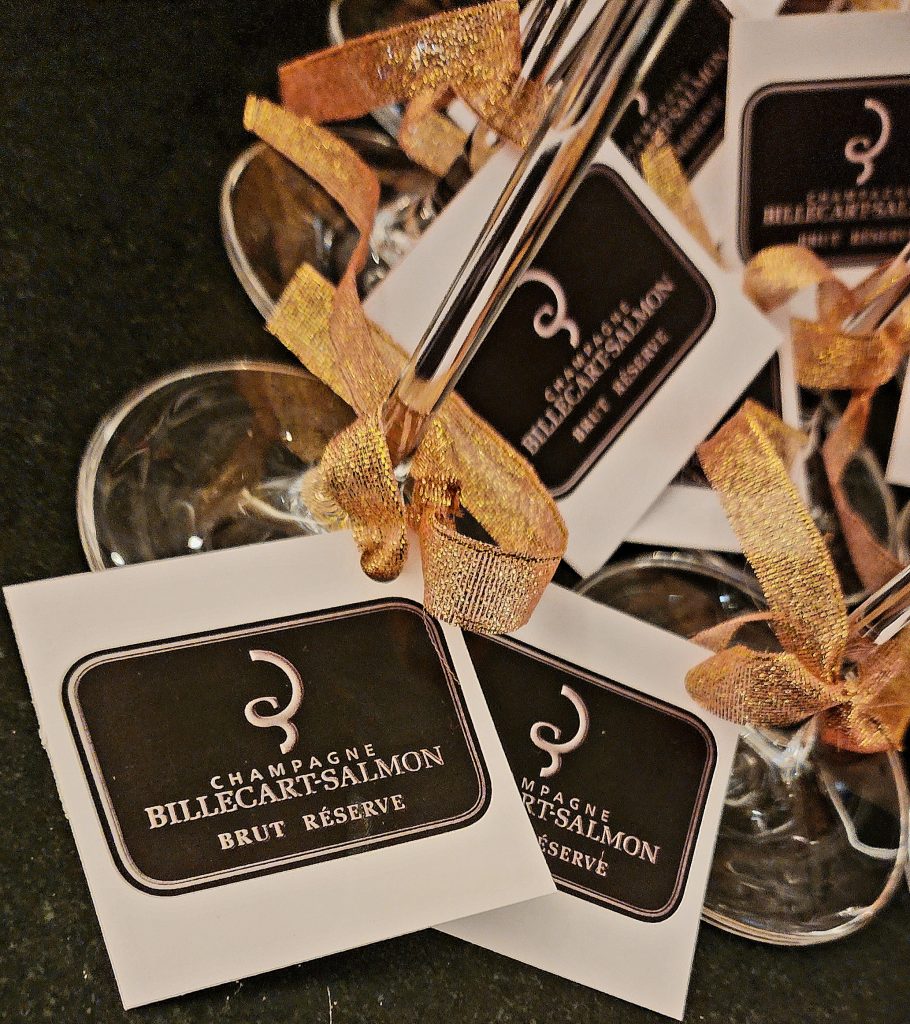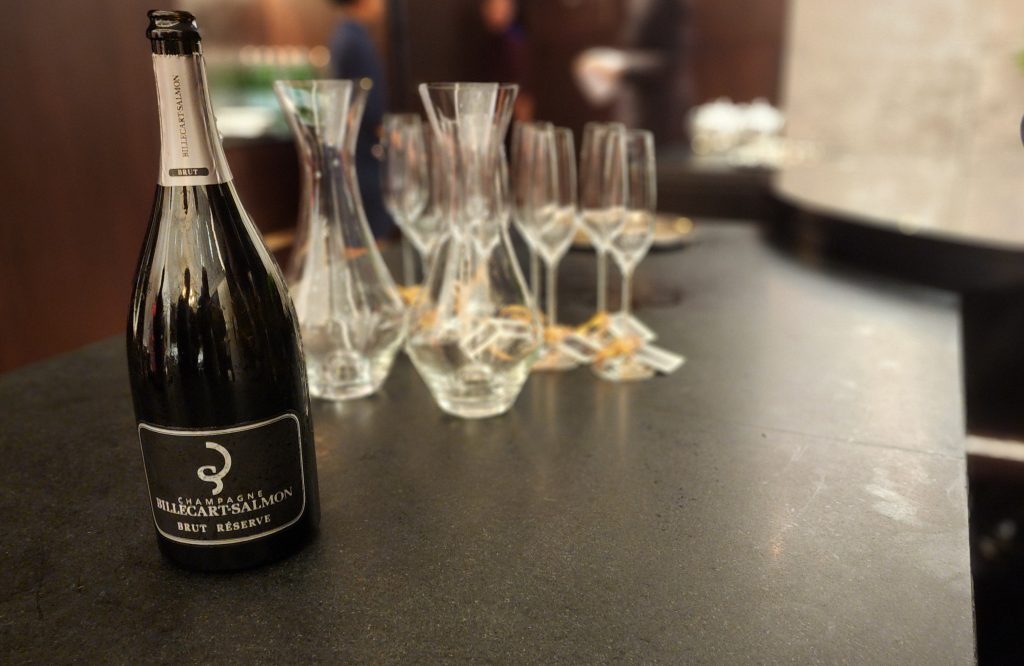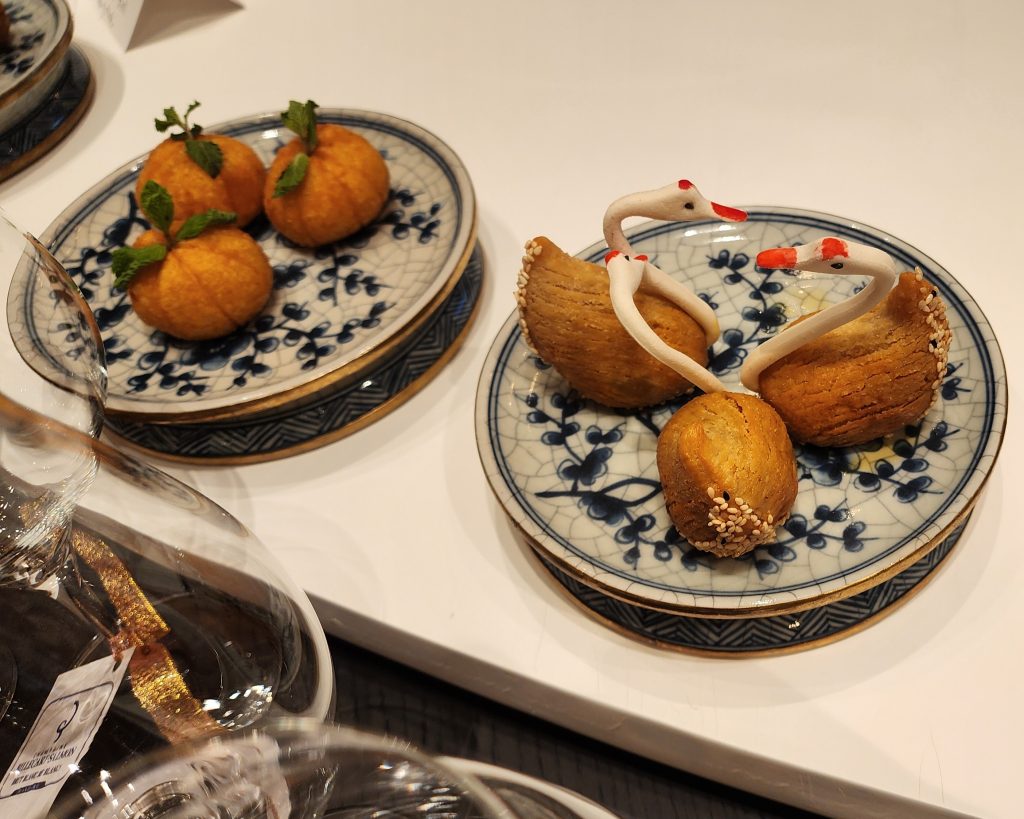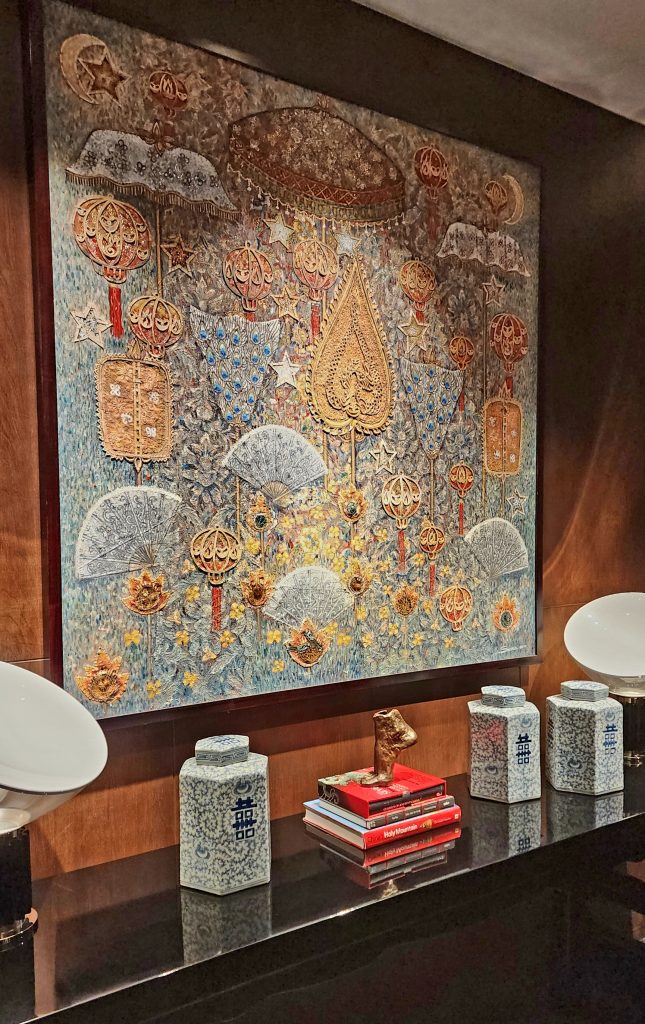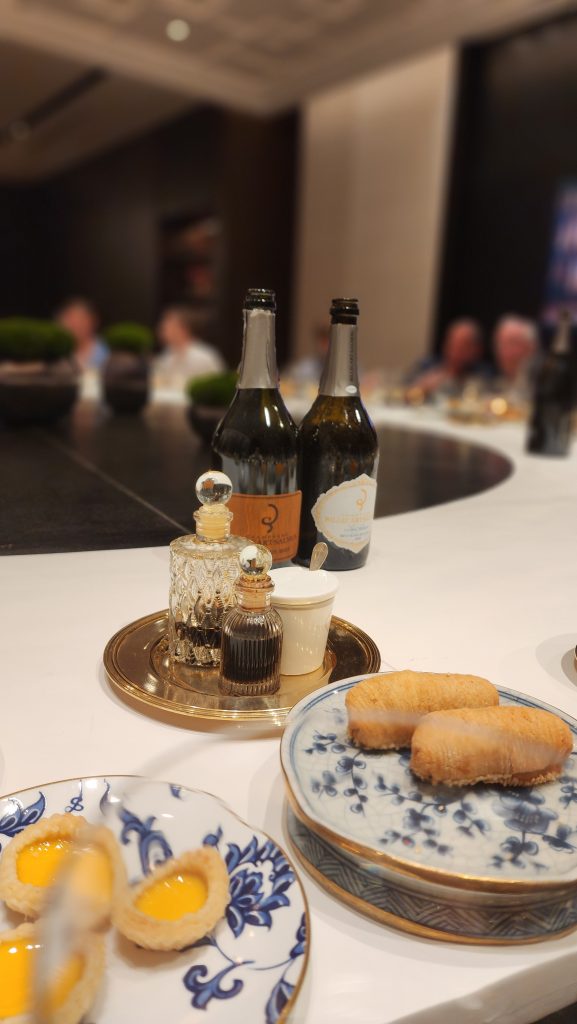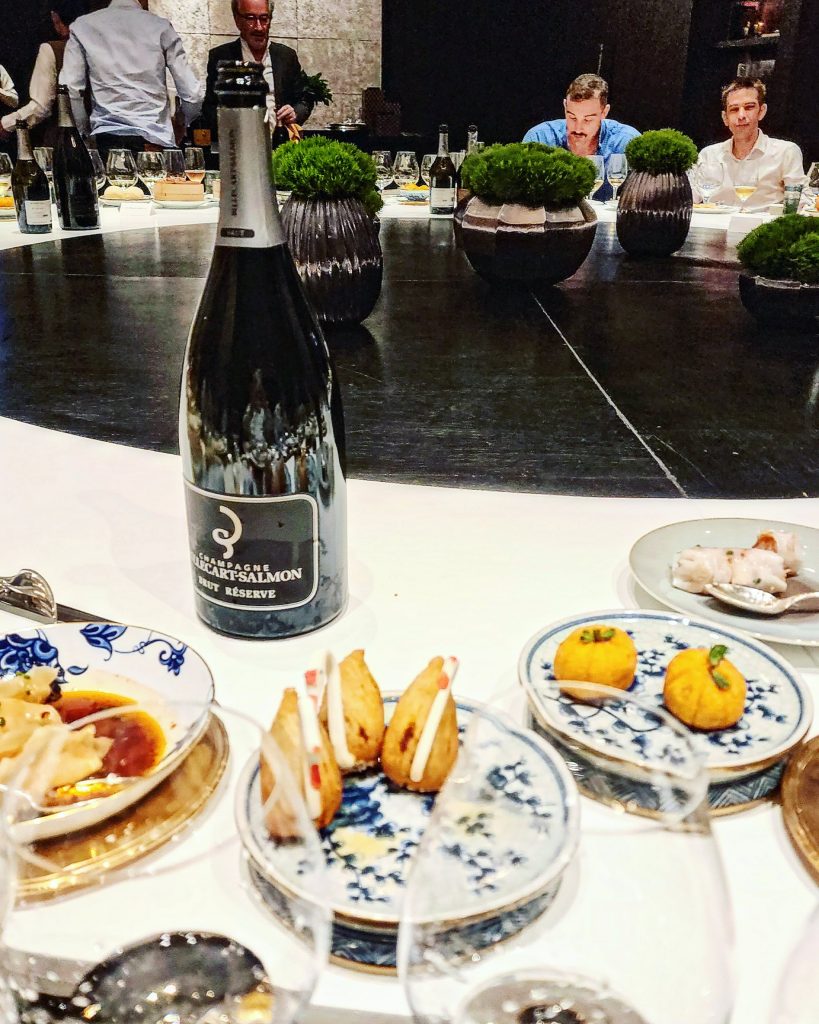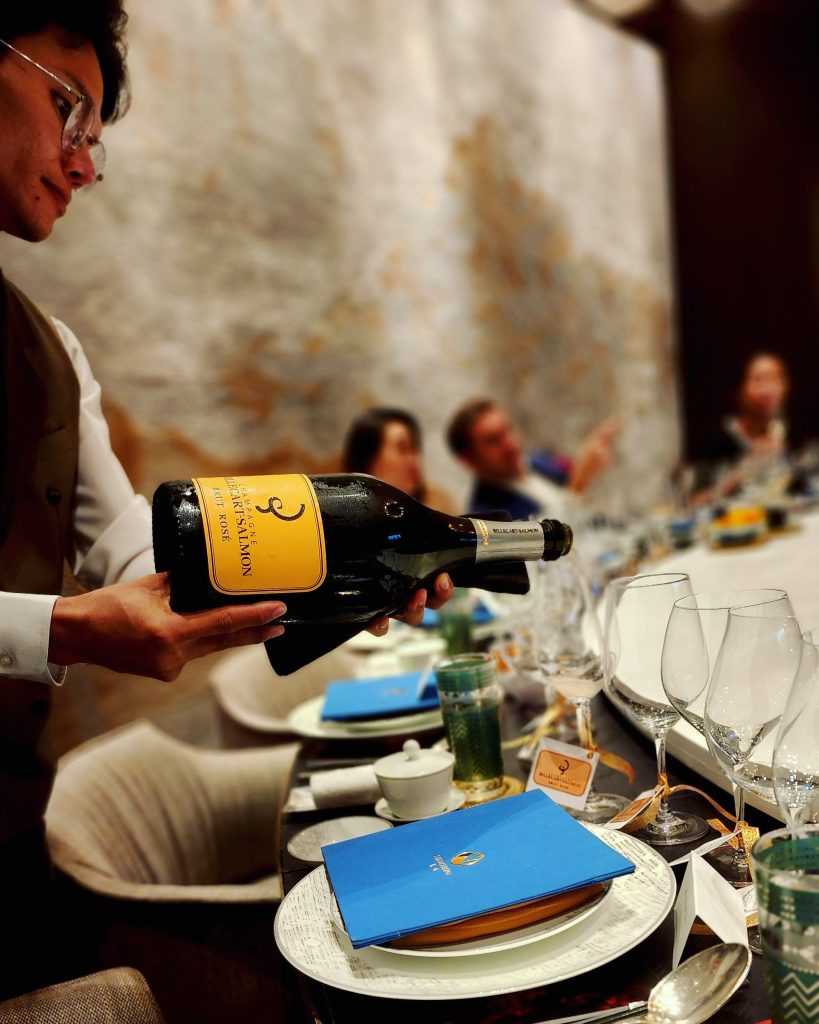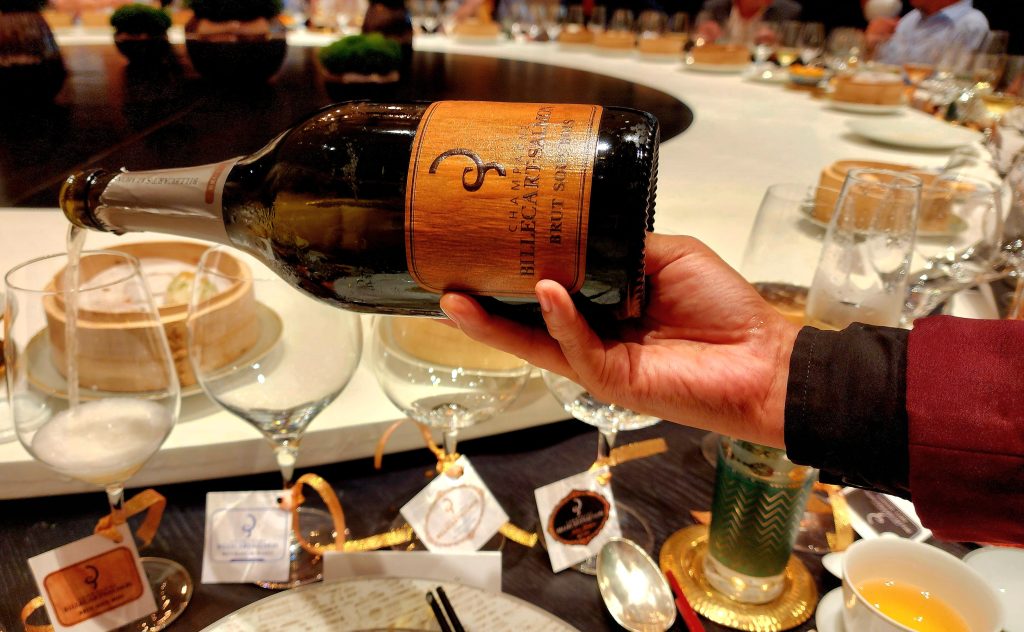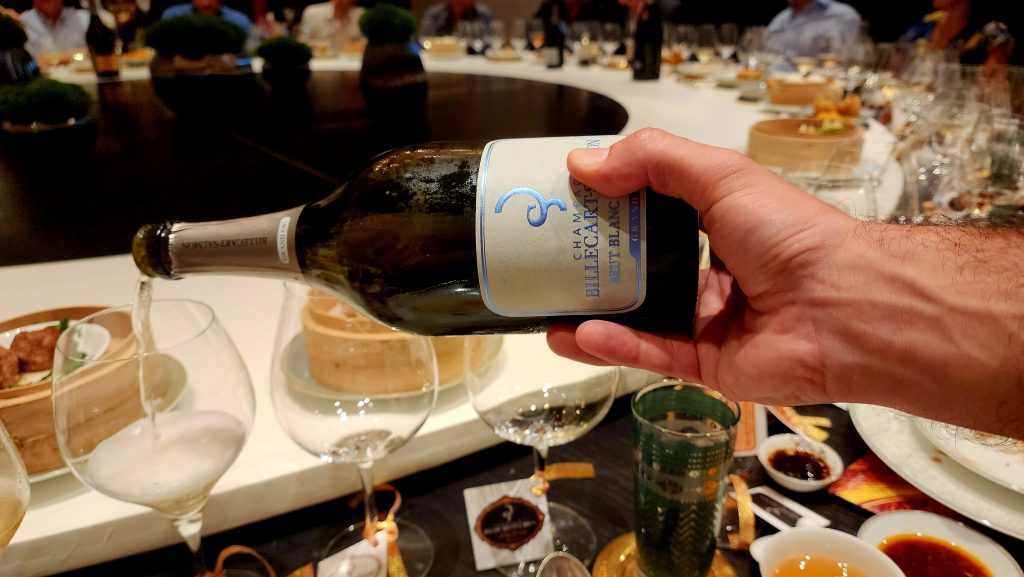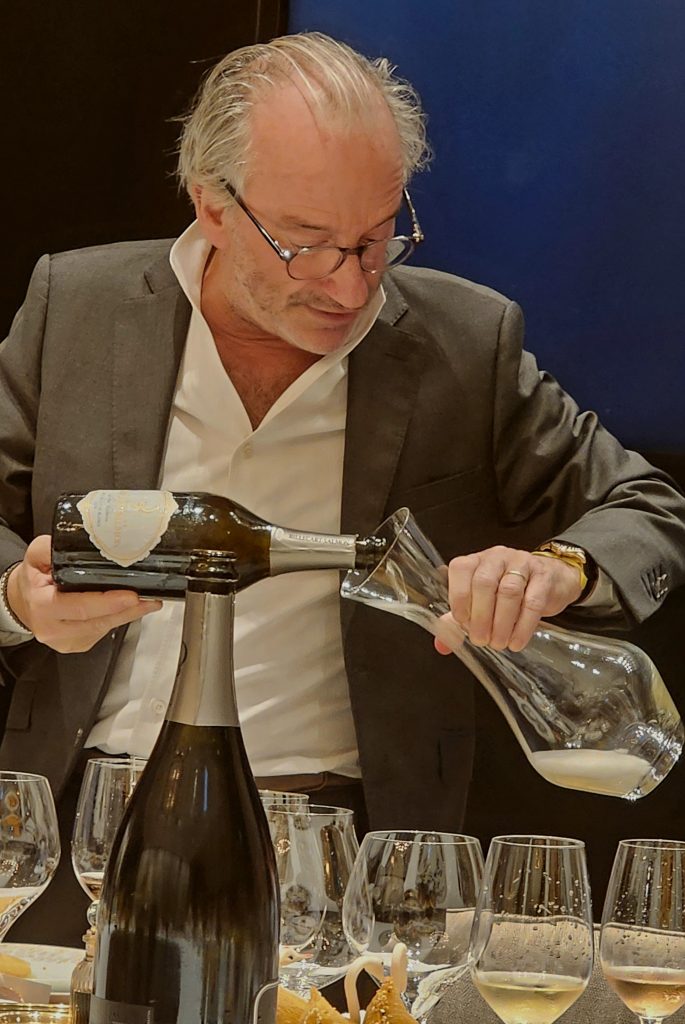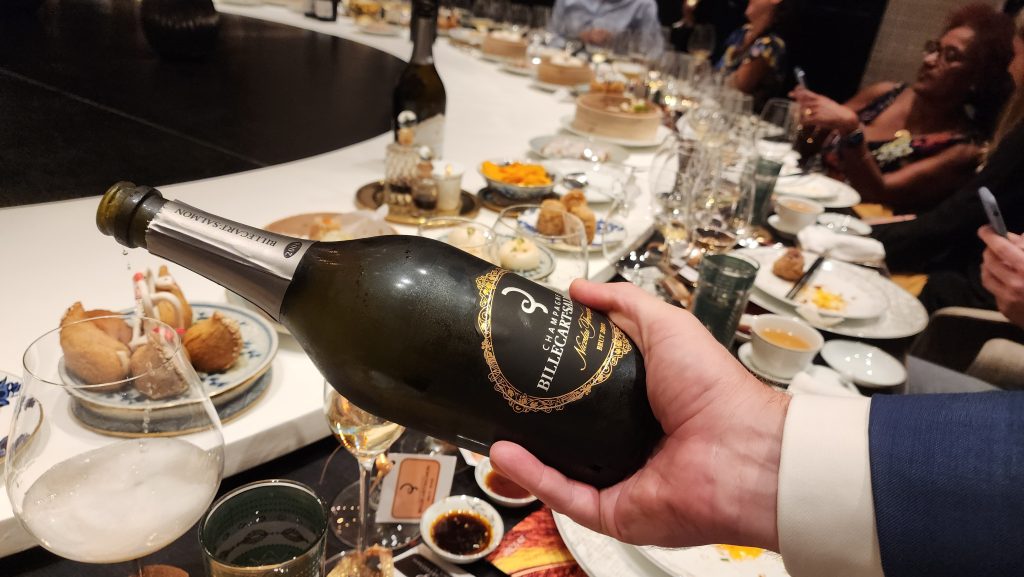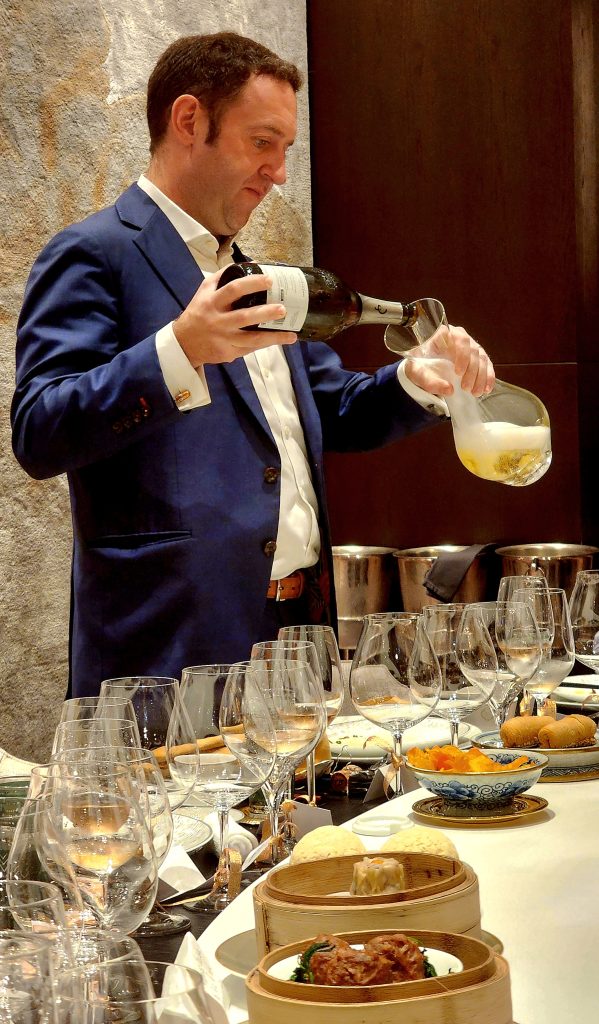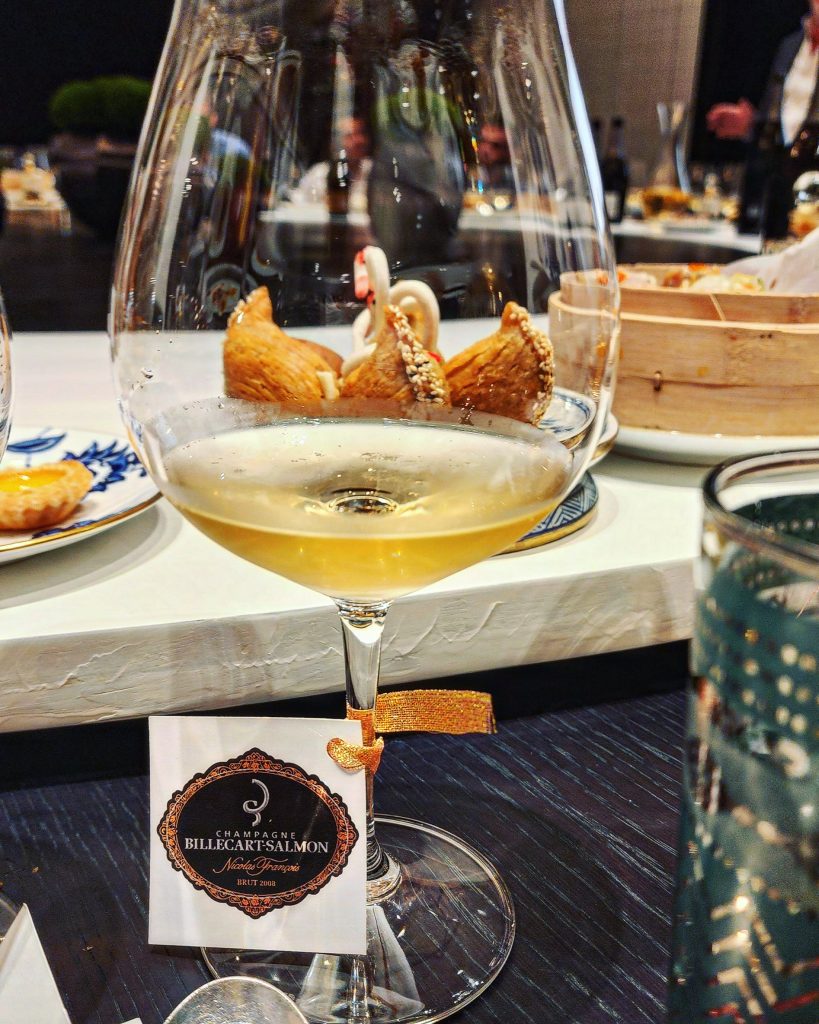Champagne & Dim Sum
Billecart Salmon et Zhan Liang
On Saturday, the 9th of December 2023, the stars aligned, and harmony filled the universe when local wine company The Warehouse decided to host a Champagne brunch at the finest dim sum restaurant in the kingdom. Six cuves of Billecart Salmon Champagne served free flow, with an endless menu of Zhan Liang’s finest little touches of the heart (dim sum). My Christmas had indeed come early.
Billecart Salmon and I have an affectionate history, and I must say, that it has not all been particularly one-sided. I (probably) first started selling Billecart Salmon as a young wine retailer 30 years ago, buying it off a young viticultural student paying his way through school as a wine wholesaler (or wine rep in the vernacular). That wine rep was Adam Jacobs who would go on to become an exceptional viticulturist, get me my first job at a winery, and be a vineyard manager and colleague for many years to come. We are still great mates to this day, (when I sent Adam pictures of this event, he immediately told me he was moving to Cambodia!)
Adam’s boss back then, Gary Steel, was the founder and CEO of Domaine Wine Shippers, the national agent in Australia for Billecart Salmon Champagne. I happened to work for two families that were his best customers (making me one of his great customers by employment). Gary was like an industry uncle to me (and to many others), and a finer mentor you would not find; he was a big gregarious bear of a man, with a great sense of humour, a wonderful charm and a big heart. From a Vietnam veteran chopper pilot, who would fly into fire zones to pull men out, to a QANTAS pilot who lost his job in the famous strike, to an importer and distributor of some of the finest Burgundy, Rhone, Chablis and Champagne wines, to great gourmand and great wine educator: Gary Steel was loyal, generous, and passionate, he remains one of the greats and a legend of the wine industry in Australia.
To this day, Gary Steel is still responsible (one way or another) for pouring most of the best wines I have ever drunk in my life, and plenty of fine Billecart Champagne was certainly amongst them. Later on in my career, when I worked at two prominent South Australian wineries, Domaine Wine Shippers was my national distributor and we found ourselves in the same portfolio as Billecart Salmon. Of course, lots of stock swaps with Gary went on, and the Billecart continued to be appreciated by Adam and me on many notable occasions.
However, the single incident that cemented my great appreciation for this Champagne House goes back to an incident when I was still a young retailer in Melbourne, Australia. I had organized a food and wine pairing event at a prominent dining establishment in the city. Gary wanted to be a part of it and suggested to me that as a young member of the Champagne family, Antoine Roland Billecart was in Australia, could he come to the event, and could we use his Champagne? Of course, I immediately said yes without any further enquiry.
The big day arrived, and I got a call from Gary requesting a favour; he had been caught up with something, so would I mind picking Antoine up from his hotel and ferrying him with me to the dinner? I didn’t mind at all and collected the young Billecart from his hotel, thinking it would be a good chance for a pre-event chat and a bit of prep.
You can only begin to imagine my surprise when I found myself being grilled by this young man about the importance of the event and Billecart’s role in it. What Antoine then revealed to me was that he had left his wife on the Gold Coast and flown down for one night at Gary’s beckoning, just to do this event. Whilst details were at risk of being lost in translation, it eventually became clear that Antoine’s wife was a very new bride indeed, so new in fact, that he had abandoned her on their honeymoon because of Gary’s insistence that this was somehow an opportunity to good to miss!
I did not think my event was that important, and I now suspected Gary wanted to put me in the firing line rather than face Antoine alone himself! Of course, Antoine was gracious and enthusiastic, if a little bewildered, and this fine Champagne house has remained a family-owned favourite with me ever since.
Today, Antoine Roland-Billecart represents the 6th generation of Billecarts running Champagne Billecart-Salmon as Deputy General Manager, with a focus on Export. On the few occasions when we have bumped into each other at wine events around the world, I never fail to remind him that he abandoned his young wife on their honeymoon, just to have dinner with me 1,700 kilometers away!
Reminiscences aside, the Billecart Salmon Champagnes have always expressed an elegance and a finesse that ranks them amongst the great Champagne houses, producing some of the very finest and most sought-after Champagnes throughout the world, it has always been my pleasure to drink them, share them and enjoy them with family and friends wherever we are and whatever the occasion.
Yum Cha
Yum Cha, (drinking tea) also known as Bang Min, (tasting tea) is a traditional southern China morning or afternoon event, it involves the drinking of tea accompanied by small parcels of food known collectively as Dim Sum.
The tradition is believed to have started along the Silk Road where weary travelers would stop at roadside tea houses. Once people worked out that drinking tea aided digestion, teahouses started offering small morsels of food to accompany the tea.
Dim sum is the selection of small parcels of food specifically prepared to be served with tea during Yum Cha. The highly specialized and crafted cuisine has its origins in Southern China, specifically amongst the Cantonese. Dim Sum master chefs are revered in much of China, and it is said to take decades to truly master the art of making the very finest dumplings.
For a great many centuries, ever since their origins on the Silk Road as a snack to go with drinking tea, these small morsels of delicious food have been as much about the art of attraction as they have about sustenance. Competing vendors would come up with ever more delectable and attractive varieties of Dim Sum to tempt weary travellers inside their tea houses, and the little morsels that translate from Cantonese as ‘a little touch on the heart’ have ever since, become ever more intricate, and delicious.
Dim Sum has evolved from being a lure to go with tea to becoming a full meal and a culinary ritual with little steamers piled high, laden with steamed or fried dumplings that resemble little packages of magical deliciousness and bite-sized morsel of the most tender treats -in fact, it is now very much the tea which is seen as the accompaniment and not the other way around.
The unique culinary art of making dim sum has long been regarded as a demanding and exceptional profession within the realm of Cantonese and Chinese cooking, taking years to perfect and decades to master, whilst dining on Dim Sum has become a fun, loud and happy occasion, shared with friends and family, a leisurely affair that can take many hours.
Chinatown
I first discovered dim sum somewhere in the final third of last century, first in Lt Bourke Street, (Chinatown) Melbourne and then regularly in Gilbert Lau’s suburban Yum Cha palace, the ‘Purple Sands.’ Whilst it was pretty much love at first bite, nothing prepares you for the grand old dim sum halls of mainland China, Hong Kong and Taiwan; already in love, this is where you take it to another level, between fiery dragon motifs and faux marble columns, amidst the moist delectables emanating steam atop the lazy Susan, this is where consummate.
After queuing out on the sidewalk for an age, patiently daydreaming about the magic going on inside, you enter a large, unremarkable room, the simplest of furnishings, functional only, no time for the fashionable or chic here. Perhaps a nod to good feng shui and the smiling statues of Fu Lu and Shou will be peering at you from a discreet yet carefully chosen location; it is your good fortune to have come here; it is their good fortune that you came.
A crush of people, a cacophony of chatter and the cling, clang noises of busy eating. Shouts, squeals, slurps, and burps: old ladies in hair nets and grubby aprons, wheeling about trolleys that are piled high with bamboo steamers; quickly and deftly, they stack them on tables, ticking boxes on little, red-lettered chits, then moving on, ever moving. Stay ever alert, for it is better to weave out of their way, lest you incur the wrath of their rather amusing version of road rage.
Finally seated, you survey a table landscape of little white, porcelain bowls with deep blue patterns, things of beauty, chipped and marked by the history of a thousand meals. A table with a large, rotating ‘Lazy Susan,’ piles of worn plastic chopsticks, and little porcelain cups -constantly refilled with oolong or chrysanthemum tea- there to wash down all those delicious little mouthfuls of steamy, greasy, juicy goodness.
You have entered a culinary Shangri La, somewhere amidst the seven levels of heaven, where friends, family and loved ones all come together and graze on delicacies as beautiful as they are delicious, morsels of magnificence, mouthfuls of the marvelous. This is special; it is noisy, it is fun, and it is food. This is life lived large, loud, and lovingly, and it might just be something close to perfect harmony.
A Chinese family is a remarkable thing, it is all whom are here in the present and all that have gone before and all that are yet to arrive, and it spans beyond time and space and is something eternal: watching a room full of Chinese families gathered together noisily and lovingly, enjoying Yum Cha in far east Asia is transcendental, wonderful, it is the joy of life and a thing of rare beauty.
Perfect Pairing
Pairing wine with food is a very old and classical part of European dining and there are many similarities between the evolution of dim sum and tea in China with the evolution of tapas and wine in Spain. In Andalusia, tavern owners would cover glasses of sherry with a tapa (literally, to cover) of bread or cured meat to keep dust, flies, and other insects out of their customers’ glasses. Eventually, innkeepers would top these ‘covers’ with ever more elaborate food, the tapa becoming an important miniature billboard to show off the establishment’s kitchen fare in order to lure a mostly illiterate customer base to their inns.
Whilst tea is seen to aid digestion and cleanse the palate in dim sum, the same can be said for the ancient practice of drinking wine with food. The ancient Greeks and Romans left ample reference to the health benefits of drinking wine with a meal. The pairing of food and wine has evolved itself to be considered a great art and an integral part of fine dining all over much of the world.
Whilst meals in the palaces of Europe were once served banquet or feasting style, which is to say, all the food was served at once; the beginnings of a meal presented to the table one course at a time is attributed to the North African polymath Ziryab (759-857) who imposed the concept on Moorish Spain, (Andalusia).
Today, European/Western notions of pairing food and wine normally see dishes served one at a time and different wines paired to each dish, as they are served. When pairing a wine to a dish aristologists must consider the weight or body of the wine and the heaviness or lightness of the dish, the flavour of the protein, the textures of the dish, the sauces, and characteristics such as fattiness, oiliness, sourness, and bitterness. They must also consider the texture of the wine, its tannin, acidity, dryness, or sweetness and how all this will interplay with the dish on the plate. By way of example, acidity promotes saliva flow on the palate and is good for transporting spice and heat away from the tongue, whilst tannins dry the palate, cutting through fats and juicy proteins; aristologists will look for compatible body, complimentary flavours and contrasting textures; the ultimate aim being to have the wine compliment the food and the food compliment the wine, in such a way as to create an elevated dining experience, greater than the sum of its individual parts.
Of course, with dim sum and much of dining across Asia, the food is served family style, looking to create a balance of flavours across multiple dishes, to be enjoyed all at once. This presents a challenge to matching food and wine, with many dishes served and eaten simultaneously. What we need here is one wine to complement them all, and look at how the constant flow of tea, with its subtlety and its fine tannin structure, refreshes, cleanses and stimulates the palate.
Dim Sum by its nature is, along with a lot of Cantonese cuisine, it is subtle in flavor and texture, highly refined and almost delicate so, the wines that are paired to it need to take this into consideration. However, there is also the matter of the dipping sauces: strong, savoury, and salty soy sauces, hot and spicy chilli sauces and sometimes garlic, pepper, lime and other piquant and strongly flavoured ingredients in the sauces and condiments. So here, along with good acidity which promotes saliva flow and can ameliorate heat, we look for wines that have a good concentration of primary fruit character to be able to compete with the saltiness, savory-ness, heat, and spice of the sauces. These do not have to be big, full-bodied wines, just wines with good intensity of fruit flavour and vibrant acidity.
Champagne for All
For me, the perfect partner for dim sum is Champagne, it is a textural thing really, sensory, and sensual and as always with Champagne, a little bit salubrious and celebratory. Here Champagne not only sets the mood, I find its subtlety of flavours, its pristine elegance, its vibrant acidity and it expansive, joyously creamy mousse work beautifully with the dumplings; just like a little spa bath after an oil massage, its bliss for the palate and I can enjoy a traditional cuvee, a Rose Champagne or a Blanc de Noir with dim sum throughout the entire meal.
Dim Sum is undoubtedly one of the world’s great and much-loved cuisines and whilst not a traditional part of the meal, Champagne can happily find a place at any dim sum table. If you go to the more refined hotels or dim sum palaces of Hong Kong or Shanghai today, you are just as likely to find a glass of champagne on the table alongside the customary pot of tea or a glass of watered-down cognac.
Whilst I don’t have to bother with trying to find a wine for every dim sum morsel on the menu, there is always a Champagne style for all your dim sum choices, one you can enjoy throughout the entire meal. When pairing Champagne to dim sum, just like the dim sum selection itself, the trick is to experiment a lot and remember the ones you like.
The Shiny World Beneath Us
Zhan Liang restaurant is in the basement, beneath Vattanac Mall at 66, Monivong Boulevard in Phnom Penh; many find it curious that a hotel, with such remarkable height and views at its disposal, would choose to place its flagship Chinese restaurant in a subterranean section of its structure. Many who book by phone ask for a table with a ‘nice view of the city or, facing the river.’ However, one does not come here to gaze off into the distance or affirm one’s position from on high, one comes here to be transported, to suspend time and place and to bathe in the brilliant light emanating from the chu-fang-chi of chef Teng Kam Seng.
Many of the grand cities of China are beehives below the surface, full of tunnels, enclaves –warrens of commerce, camaraderie, collusion, conviviality and culinaria. They are bustling, cackling, smoky, smelly, and noisy. Life laid bare; teashops, sweatshops, traders, dealers, cooks, crooks, artists, calligraphers, masseuse and more. The clacking of mah-jong tiles ever in the background, hidden from view, crouching fortune tellers at low tables, with darting eyes and soft voices. The scents of joss, unguents and ointments wafting from behind a curtain. Steam, spice, smoke, the smells of cooking permeate more than every nook and cranny down here, they seep through one’s pores, feeding one’s imagination.
In modern cities like Hong Kong, Taiwan, Singapore and others, there are whole villages of malls, food courts and centers of commerce and community below the ground. Points of convergence; a city’s synapses connected by tunnels of electric trains. No distractions down here, just the animation of pulsating life. In places of high-density-living, such modernized subterranean spaces move us around the city but, in isolation, they also take us on little journeys through our senses; sight, sound, smell, touch and taste, allowing -or even forcing- one to focus on the smaller, more human scenes in front of us, life’s minutiae; not to be distracted by climate and the broad vistas above ground. Dining in these spaces allows us to pay more attention to the meal, the food, the service, the company, the wine, the art, and the whole dining experience, with more sensitivity, appreciation and so, ultimately -in the moment- we may experience more enjoyment.
崭亮
Zhan Liang translates as ‘shining and brilliant’ (as in light) in English; the space indeed reminds me of a modern version of the underground warrens and dining halls of great Asian cities, spaces that I have been visiting and dining in for the past 30 years.
Smaller nooks and recesses of this dining space house a bar and a tea library, then you walk through, turn a corner and an alcove opens as a long, narrow dining area, turn right and this leads onto a larger dining area, which you walk through to get to the private dining rooms of varying sizes, concealed somewhat, on the other side. Visually, with its art and design each space is a revelation, walking through it for the first time is like unwrapping presents.
Melbourne-based designers BAR and Tokyo’s Bond Design Studio collaborated on the dining spaces of the hotel and Zhan Liang is a sensitively realized space. The contemporary artworks make a statement; the overall ambience is contemporary Pan-Asian with specific accents on China and Cambodia, but there are also hints of Japan and beyond. Modern, elegant, and refined, one is soon charmed, at ease and sitting in excited anticipation.
There are suggestions of classical China everywhere, but no clichés or kitsch; this is modern creativity with respect for its traditions; jade-coloured tiles reminiscent of matted bamboo, lattice touches, striking paintings that remind one of a Shanghai cigarette girl print or an ancient Cambodian temple mural, but these works are unmistakably fresh; new interpretations of ancient cultures, through the eyes of a new generation of young artists. A couple of cheeky brass pigs stand playfully in the main dining hall, a gentle reminder to enjoy oneself and not take the refined grandeur too seriously –you are meant to relax and indulge yourself here.
無爲
Wu Wei
‘The Way is ever without action, yet nothing is left undone.’
Tao Te Ching chapter 37
Entry to the restaurant is through the small bar, high stools facing rows of whiskies, cognacs, and Chinese distillations. Turn left and you enter the tea library, this is like a little apothecary, there are rows of small shelves and a myriad of jars containing dozens and dozens of different teas; from the Chinese classics such as Pu’er to modern infusions from TWG. The tea library, like the hotel itself, pays respect to the traditions of the past, with its eyes fixed firmly on the possibilities of the future.
In traditional Chinese culture, serving tea is a way to show respect and appreciation, the Gongfu-cha is strong at Zhan Liang; allowing the resident tea sommelier to help you select the perfect tea brings new and delightful joys to your lips.
The spaces in the dining areas are all wood and steel and the furniture low and stylish, made for comfort, not cultural appropriation. The ceilings of the dining annex and private rooms are white, with a subtle pattern of Chinese lattice. The art hanging in these rooms is stunning, impacting your senses and your sense of expectation. The large, twenty plus seat, round dining tables in the private rooms, with their huge, motorized Lazy-Susan’s, are inspirational spaces, the imagination quickly soars to organizing an event, just to dine in one.
The main hall is an art installation unto itself and there is more than a hint of designer Joyce Wang’s, Mok 32 in Hong Kong. A large and impressive glass wine cabinet dominates one wall, jade-coloured tiles the other, at one end of the space is the open kitchen, all steam and steel, racks hung with roast duck and BBQ pork: a touch of Jacques Derrida-esque deconstructivism, reminiscent of a Chinese chop-shop.
The main area is framed by two large dining bulkheads, each wrapped in a weave of wire-cable tie-downs, like elaborate gondolas attached to hot air balloons, suspended under a black glass roof that could be the cosmos or the abyss. With a little imagination, one can see yourself in the courtyard of a Siheyuan under a night sky, with a sense of wu-wei and more than a little excitement at the culinary journey to come.
The dim sum at Xang Liang is of an exceedingly high quality, prepared with a great deal of expertise, it is creative, and it is wonderfully, absolutely irresistibly delicious! Prices range from reasonable to slightly on the expensive side, just as the offerings range from riffs on the classics to unique and exquisite designer dim sum. Steamed, fried, barbecued, and baked, there is an extensive and beautiful selection from classics like Har Gow, Siu Mai and Shanghainese Xiao Long Bao, to bespoke morsels such as wagyu beef buns, truffle pumpkin puffs and many more.
The selection we had at our Champagne event was as many and varied as it was exquisite and exceptional; the finest in the kingdom and surely some of the best in Southeast Asia.
The Champagnes
Billecart Salmon Champagne Brut Reserve NV
- 30% Pinot Noir from the Montagne de Reims and the Grande Vallée de la Marne
- 30% Chardonnay sourced from the best Crus in the Champagne region
- 40% Meunier from the Vallée de la Marne and the southern slopes of Epernay
- Dosage: 8g/l
- Vinification in stainless steel tanks
- Malolactic fermentation
- 50% to 60% reserve wines
- Ageing on lees: 30 months
A very elegant house style with biscotti and almond notes, and hints of vanilla pod, grapefruit, white flowers, and fresh pear, over a restrained Meunier landscape of red fruit, earthier tones and shroom. A very refined and delightful Champagne with lovely grace and poise on the palate. The bead is fine, the mousse vivacious; there is a wonderful length through the palate, supported by a fine structure of charming acidity.
Billecart Salmon Champagne Brut Rose NV
- 40% Chardonnay sourced from the best Crus in the Champagne region
- 30 % Pinot Noir from the Montagne de Reims and the Grande Vallée de la Marne
- 30% Meunier from the Vallée de la Marne and the southern slopes of Epernay
- Dosage: 9g
- Vinification in stainless steel
- Malolactic fermentation
- 40% reserve wines
- Ageing on lees: 36 months
One of Champagne’s greatest Rose producers, the wine has aromas of white strawberries, lemon peel, fresh raspberries and nectarines, the palate has typical elegance and finesse with impeccable length and structure. It also paired exquisitely with the dim sum.
Billecart Salmon Champagne Brut Sous Bois NV
Composed of the three Champenois grape varieties in equal proportions
- Premier and Grand Cru Chardonnay from the Côte des Blancs
- Premier and Grand Cru Pinot Noir from the Montagne de Reims, Aÿ and Mareuil-sur-Aÿ
- Meunier from the right bank of the Vallée de la Marne
- Dosage: 7g/l
- Vinification and ageing take place in oak casks at low temperature
- Partial malolactic fermentation
- From 30% to 35% reserve wines
- Ageing on lees: 6 to 7 years
Pale lemon in colour with gold hues, reflective perhaps of its vinification on oak casks. The aromas are rich and broad, with notes of forest floor, duxelles, roasted nuts, ginger, and a hint of spice. Whilst more expressive than the other cuves, it retains the house’s class and restraint, the oak setting the theme rather than dictating the narrative.
Billecart Salmon Champagne Blanc de Blanc GRAND GRU
- 100% Chardonnay
- Grands Crus de villages de la Côte des Blancs: Avize, Chouilly, Cramant, Mesnil-sur-Oger.
- Dosage: 8 g/l
- Vinification in stainless steel tanks
- Partial malolactic fermentation
- From 33% to 40% reserve wines
- Ageing on lees: 4 to 5 years
Beautifully elegant wine with a fine, persistent bead, a creamy mousse and aromas of lemon zest, white peach, fig, hazelnut, and brioche. The palate is very fine, with restrained fruit, poise and evocation giving way to exceptional, chalky minerality.
Billecart Salmon Champagne Cuvee Louis Salmon, Blanc de Blanc Vintage 2009
- 100% Chardonnay
- Grands Crus of Côtes des Blancs: 21% Chouilly, 58% Cramant, 21% Mesnil-sur-Oger
- Dosage: 3,75g/l
- Partial malolactic fermentation
- 100% Vinification in stainless steel tanks
- Ageing on lees: 144 months
An exceptional vintage Blanc de Blanc drinking beautifully well into its second decade. Aromas of yuzu, pear, wild honey, diced almonds, yeast extract and pickled ginger. A persistent bead and fine mousse the fruit is expressive and vibrant with good length and complexity, giving way to a lively, salty, minerality.
Billecart Salmon Champagne Cuvee Nicolas Francois, Brut 2008
- 83% Grands Crus and 17% Premiers Crus:
- 60% Pinot Noir from the Premiers and Grands crus of the Montagne de Reims and the Grande Vallée de la Marne (Aÿ, Verzenay et Mareuil-sur-Aÿ.)
- 40% Chardonnay from the Côte des Blancs (Mesnil, Chouilly, Cramant)
- Dosage: 2.9 g/l
- 17% vinified in oak barrels
- Partial malolactic fermentation
- Ageing potential: more than 150 months
- Available formats: bottle and magnum
- Ageing on lees: 10 years
Fifteen years young and drinking beautifully; the wine has aromas of sourdough, cranberry, marmalade, and a hint of earthiness. The palate is very refined, complex, and expressive yet with great poise, the mousse is all seduction and restraint, persistent yet alluring, and as always that impeccable acidity like an oyster shell in a satin sheet.
Coda
Here we witnessed an oratorio where each Cuve took its turn center stage to perform its sparkling aria. The dim sum was the music over which their voices soured, Zhan Liang played their music perfectly and Rosewood was our church, providing an ambience and service that has it rightfully ranked as one of the best hotels in the world. A memorable exhibition of some of Champagne’s finest, from one of its greatest family-owned producers. My only final comment is….encore!!!

